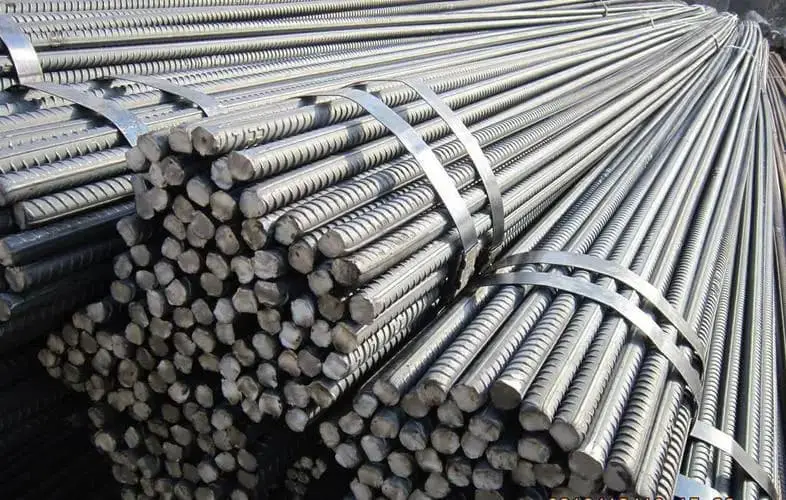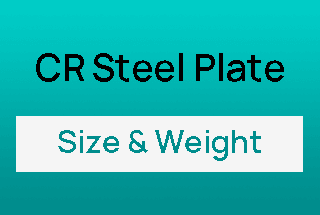
Have you ever wondered about the weight of steel reinforcement bars (rebars) used in construction? In this insightful blog post, we’ll dive into the fascinating world of rebar weight charts and calculators. Discover how these essential tools help engineers and contractors accurately estimate the weight of various rebar sizes, ensuring precise material management in construction projects. Get ready to expand your knowledge and streamline your workflow with this comprehensive guide to rebar weight calculations.


| Item | Model | Unit | Weight |
|---|---|---|---|
| Rebar | Φ6 | kg/m | 0.222 |
| Rebar | Φ8 | kg/m | 0.395 |
| Rebar | Φ10 | kg/m | 0.6169 |
| Rebar | Φ12 | kg/m | 0.888 |
| Rebar | Φ14 | kg/m | 1.21 |
| Rebar | Φ16 | kg/m | 1.58 |
| Rebar | Φ18 | kg/m | 2 |
| Rebar | Φ20 | kg/m | 2.47 |
| Rebar | Φ22 | kg/m | 2.98 |
| Rebar | Φ25 | kg/m | 3.85 |
| Rebar | Φ28 | kg/m | 4.83 |
| Rebar | Φ32 | kg/m | 6.31 |
| Rebar | Φ36 | kg/m | 7.99 |
| Rebar | Φ40 | kg/m | 9.87 |
| Rebar | Φ50 | kg/m | 15.42 |
| MS HR round wire rod | Φ5.5 | kg/m | 0.187 |
| MS HR round wire rod | Φ6.0 | kg/m | 0.222 |
| MS HR round wire rod | Φ6.5 | kg/m | 0.26 |
| MS HR round wire rod | Φ7.0 | kg/m | 0.3019 |
| MS HR round wire rod | Φ7.5 | kg/m | 0.3469 |
| Steel Strand for Prestressed Concrete(1×2) | 10 | kg/km | 310 |
| Steel Strand for Prestressed Concrete(1×2) | 12 | kg/km | 447 |
| Steel Strand for Prestressed Concrete(1×3) | 10.8 | kg/km | 465 |
| Steel Strand for Prestressed Concrete(1×3) | 12.9 | kg/km | 671 |
| Steel Strand for Prestressed Concrete(1×7)Standard | 9.5 | kg/km | 432 |
| Steel Strand for Prestressed Concrete(1×7)Standard | 11.1 | kg/km | 580 |
| Steel Strand for Prestressed Concrete(1×7)Standard | 12.7 | kg/km | 774 |
| Steel Strand for Prestressed Concrete(1×7)Standard | 15.2 | kg/km | 1101 |
| Steel Strand for Prestressed Concrete(1×7)Drawing Type | 12.7 | kg/km | 890 |
| Steel Strand for Prestressed Concrete(1×7)Drawing Type | 15.2 | kg/km | 1295 |
| Indented wire | 5 | kg/km | 0.016 |
Note:
(1) Theoretical weight calculation formula of rebar: theoretical weight (kg/m) = 0.00617 × D² (where, D is the section diameter, unit: mm)
(2) The density is calculated as 7.85g/cm³;
(3) The theoretical weight of hot-rolled ribbed bars, cold-rolled ribbed bars, HRB335, HRB400, HRB500 and other deformed bars of different classifications is the same.
(4) The theoretical weight calculated by the formula is different from the actual weight, and the error is generally about 0.2% ~ 0.7%, which can only be used as a reference for estimation.
(weight per meter)
For example:
Rebar grades are categorized by their minimum yield strength, which determines their resistance to stretching, bending, and twisting.
There are different types of rebar for various construction needs.
Expanded Metal Rebar: Made from a single steel sheet cut and expanded into a mesh, it is ideal for sidewalks and walking areas needing extra plaster support.
Welded Wire Fabric (WWF) Rebar: Made of welded low-carbon steel wire, it forms a grid that enhances concrete slab strength.
The specifications of rebar are essential components in import and export trade contracts, providing crucial details for quality assurance and compliance.
Typically, rebar specifications should encompass:
The internationally recognized standard nominal diameters for rebar are 6, 8, 10, 12, 16, 20, 25, 32, 40, and 50mm. These sizes are designed to meet various structural requirements and facilitate standardization across global markets.
Rebar can be supplied in two primary length configurations:
The fixed length range for rebar exports varies by country:
For domestic rebar in many countries, including the United States, standard lengths are typically 9m (30 feet) or 12m (40 feet) when not otherwise specified in the contract. However, it’s crucial to verify local standards and project requirements, as practices may vary.
Accurate specification of rebar properties ensures structural integrity, facilitates proper material quantification, and streamlines the construction process. It also plays a vital role in quality control, cost estimation, and regulatory compliance in international trade and construction projects.
Steel’s density, usually about 7850 kg/m³, is essential for determining rebar weight. These compositional changes, arising from manufacturing processes or deliberate material selection, can enhance mechanical properties, thereby influencing the rebar’s application and load-bearing capabilities.
Rebar weight depends fundamentally on its diameter and length. The formula for weight calculation emphasizes that a change in diameter or length directly affects weight:
This shows that larger diameters significantly increase weight per unit length.
Though surface deformations provide better grip, they slightly increase weight due to the extra material used. This should be considered in precise engineering applications where accuracy is crucial.
The method of rebar production, including cooling and tempering, can influence dimensions. Variations in manufacturing tolerances might alter diameter slightly, affecting weight. Additional processing like galvanizing or epoxy-coating increases weight due to extra layers.
Environmental conditions, like temperature and humidity, can subtly influence rebar weight. Cold may make the bar denser through contraction, while heat can cause expansion, lightly reducing perceived weight. These factors become significant in highly precise projects.
Rebar size is selected based on structural needs and load capacities, dictating weight and dimensions. Engineers must consider spacing, concrete cover, and bonding to ensure safety and compliance.
Understanding these factors ensures accurate rebar weight calculations, which are crucial for maintaining structural integrity and achieving project success.
For construction projects requiring minimal reinforcement, small rebar sizes like #2 and #3 are commonly used. These rebars are perfect for non-structural applications, providing additional support or serving as a framework in simple concrete structures. Residential patios, driveways, and minor concrete repairs often benefit from these sizes due to their manageable weight and adequate tensile capabilities for lighter duties.
Medium rebar sizes, notably #4 and #5, are fundamental in both residential and medium-scale commercial construction. The #4 rebar balances strength and flexibility, ideal for forming walls and columns. Conversely, #5 rebar provides substantial tensile strength for essential structures like footers and foundations, which are critical in distributing loads across a structure’s base. These bars are staples in large residential constructions or moderately sized commercial buildings, effectively handling foundational stresses.
Larger construction projects often demand rebar sizes like #6 to #11, which are integral in reinforcing beams, columns, and foundation elements of larger buildings. These heavier rebar sizes offer reinforced support necessary for enduring significant loads and shear forces, making them indispensable in sizable engineering projects. Further up the scale, #14 rebar and beyond come into play, reinforcing high-rise buildings, bridges, and extensive industrial frameworks. These substantial bars, often thicker and denser, are designed to withstand extreme forces, ensuring the durability and stability of massive infrastructures.
Selecting the right rebar size is crucial for structural integrity, cost-efficiency, and project feasibility. Employing smaller sizes where possible can reduce material costs and simplify logistics, whereas opting for larger rebars ensures safety and load capacity in towering or industrial projects. Choosing the appropriate rebar size ensures safety and load capacity in all projects. Aligning size with load and environmental conditions enhances structure lifespan and effectiveness.
Introduction
In global construction and sourcing, it’s essential to grasp the regional variations in rebar sizing systems. These differences not only impact the size nomenclature but also influence how project logistics and material sourcing are managed.
Metric vs. Imperial System
Weight Measurement
Understanding how weight is calculated in these systems is crucial for project planning:
Countries maintain their own standards for rebar, vital for ensuring quality and consistency in construction:
Rebar, or reinforcing bar, is a steel bar or mesh of steel wires core to reinforced concrete structures. It provides essential support, strengthening concrete by absorbing tensile forces it cannot naturally withstand. This section delves into various real-world scenarios where rebar’s weight and size considerations critically shape construction outcomes.
Engineers designing a 40-story residential tower must plan for vertical and lateral loads, necessitating robust rebar reinforcement. Typically, using a mix of #11 and #14 rebar enhances the structure’s stability. Calculating rebar weight ensures proper support, allowing efficient resource allocation and timely project completion.
In bridge construction, rebar is pivotal for durability and strength. For example, using #14 rebar provides necessary tensile strength against traffic and environmental loads, particularly in reinforcing bridge arches. Precise weight calculations ensure optimal material usage, contributing to the bridge’s structural integrity and longevity.
For residential projects, smaller rebar sizes suffice due to lighter structural demands. In constructing a driveway or patio, a grid of #3 or #4 rebar, uniformly spaced to strengthen concrete and prevent cracks, is typical. Understanding rebar weight facilitates accurate procurement, ensuring a cost-effective yet robust build.
Constructing a solid foundation for an industrial facility involves both medium and large rebar. In projects like warehouse floors requiring reinforcement for heavy machinery, engineers deploy #5 or #6 rebar to distribute loads evenly. Accurate size and weight calculations are crucial for integrating rebar seamlessly, enhancing safety and budget compliance.
Retrofitting existing structures often demands innovative rebar use. Reinforcing commercial building columns to support extra stories, for instance, may involve varied rebar sizes and precise weight calculations. This approach minimizes disruption to existing structures, reducing costs while maximizing flexibility.
Understanding the nuanced application of rebar in varying construction projects underscores its vital role in ensuring structural integrity and sustainability. By mastering these principles, construction professionals can effectively meet complex project requirements and enhance the durability of their builds.
Below are answers to some frequently asked questions:
The weight of rebar per meter or foot differs based on its diameter. For example, for a 10mm diameter rebar, the weight is approximately 0.617 kg per meter (0.189 kg per foot). In imperial measurements, a #3 rebar weighs about 0.376 lb per foot (0.561 kg per foot). These weights are derived from the common formula used in construction: ( W=(D2/162.28)xL ), where ( D ) is the diameter in millimeters and ( L ) is the length in meters, assuming steel density is around 7850 kg/m³. This calculation is crucial for accurate material estimation in construction projects.
To calculate the weight of rebar for your project, first determine the total length of rebar you need by identifying the linear feet or meters required for your construction. Next, refer to weight tables or calculators for the specific rebar size, which will provide weight per unit length (either in pounds per foot or kilograms per meter). Multiply the total length by the weight per unit length. Alternatively, use the formula ( W=(D2/162.28) x L ), with ( D ) as diameter in millimeters and ( L ) as length in meters, to calculate the weight directly. Consider configurations like grids and spacing if applicable, especially for larger constructions.
The weight of #14 rebar is 7.650 pounds per linear foot, or 11.41 kilograms per meter. These values are consistent across reliable sources, providing accurate weight calculations for construction and engineering applications.
Rebar diameter significantly affects its weight, as the weight increases with the square of the diameter. For example, the formula ( W=D2/162.28 x L) shows that as the diameter ( D ) increases, the weight ( W ) increases substantially for a given length ( L ). This relationship means that larger diameters result in heavier rebar. While surface deformation patterns may add minimal weight, the diameter primarily dictates the rebar’s overall weight. This understanding is crucial for construction projects, as different rebar diameters are selected based on the specific structural needs and load requirements of projects.
The typical applications for various rebar sizes are determined by the structural demands of a project and expected loads. Smaller sizes like #3 rebar (3/8” diameter) are used in lighter reinforcement tasks such as driveways, patios, and some residential projects. #4 rebar (1/2” diameter) is common in standard construction for foundations, footings, and residential columns. Larger sizes like #5 (5/8” diameter) and #6 (3/4” diameter) are employed in structures subject to heavier loads, such as highways, bridges, retaining walls, and industrial buildings. For even more demanding applications, such as multi-story buildings and significant infrastructure projects, rebar sizes #7 (7/8” diameter) up to #11 (1–3/8” diameter) are used. The largest standard sizes, #14 (1–3/4” diameter) and #18 (2–1/4” diameter), are reserved for the most demanding projects, including tall buildings, bridges, and docks requiring maximum strength and support. The choice of rebar size is integral to ensuring that the structural integrity and load-bearing requirements of the concrete structures are met effectively.
Yes, there are differences in rebar sizing systems globally, mainly between the Imperial and Metric systems. In the Imperial system, rebar sizes are designated by numbers (e.g., #3, #4), corresponding to specific diameters in inches. The Metric system, however, uses the nominal diameter in millimeters for sizing (e.g., #10 for 9.5 mm). The “soft metric” system in the U.S. aligns Imperial sizes with Metric designations to avoid dual inventories. Furthermore, regional variations exist, such as in the European Union, where rebar sizes reflect true nominal diameters (e.g., 6mm rebar as 6.0 mm). Canada also uses the Metric system with rounded designations compatible with U.S. and European standards. Understanding these differences is essential to ensure correct procurement and application, especially when working with international suppliers.








